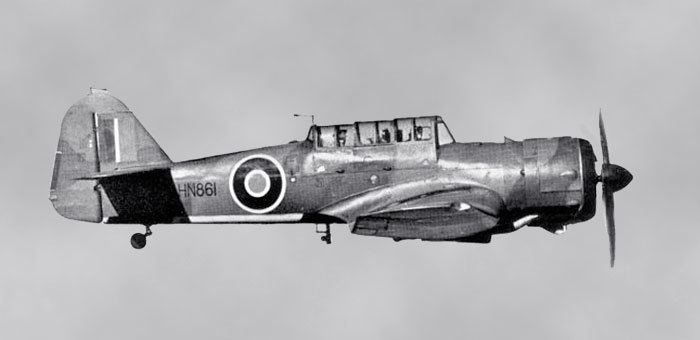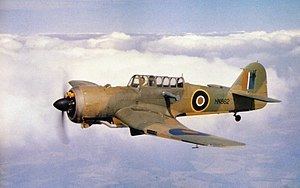Top speed 386 km/h Length 9.42 m | Wingspan 12 m First flight April 24, 1942 | |
 | ||
The Miles M.25 Martinet was a target tug aircraft of the Royal Air Force and Fleet Air Arm that was in service during the Second World War. It was the first British aircraft to be designed specifically for target towing.
Contents
Design and development

Based upon the Miles Master II, the Martinet featured a strengthened airframe to handle the stresses of towing a target drogue. Other differences from the Master included a longer nose, higher cockpit and greater wingspan, but otherwise the two aircraft shared many common components. The targets and towing gear were contained in a fairing beneath the fuselage and were retracted by an external, wind-powered winch.
The first prototype Martinet was first flown on 24 April 1942, by Chief Test Pilot F/Lt Thomas Rose from Woodley Aerodrome. In total, 1,724 Martinets were produced by Miles Aircraft Ltd for the RAF and FAA to meet Air Ministry Specification 12/41.

There were two other variants of the Martinet; the M.50 Queen Martinet, a radio-controlled target drone of which 69 were built and a further 17 produced through conversion of production Martinets. The M.37 Martinet Trainer was developed during the war but only two were built. All Martinets and their variants were manufactured at Woodley.
Variants

Operators
Specifications (M.25)
Data from The Hamlyn Concise Guide to British Aircraft of World War II.
General characteristics

Performance
Surviving aircraft
A single Martinet survives; it is owned by the Museum of Berkshire Aviation in the United Kingdom. The aircraft (RAF serial number MS902) was built in 1943, and spent its operational life in Iceland at RAF Reykjavik. In 1949, MS902 was sold to the Akureyri Flying Club and given the Icelandic civil registration TF-SHC. The club flew it until it crashed in 1951 near Kopasker in north-east Iceland. The wreckage remained at the crash site until 1977, when it was recovered and placed in storage by the Icelandic Aviation Historical Society.
The aircraft was returned to the United Kingdom in 1996 by the Museum of Berkshire Aviation and has since been the subject of a lengthy restoration project.
